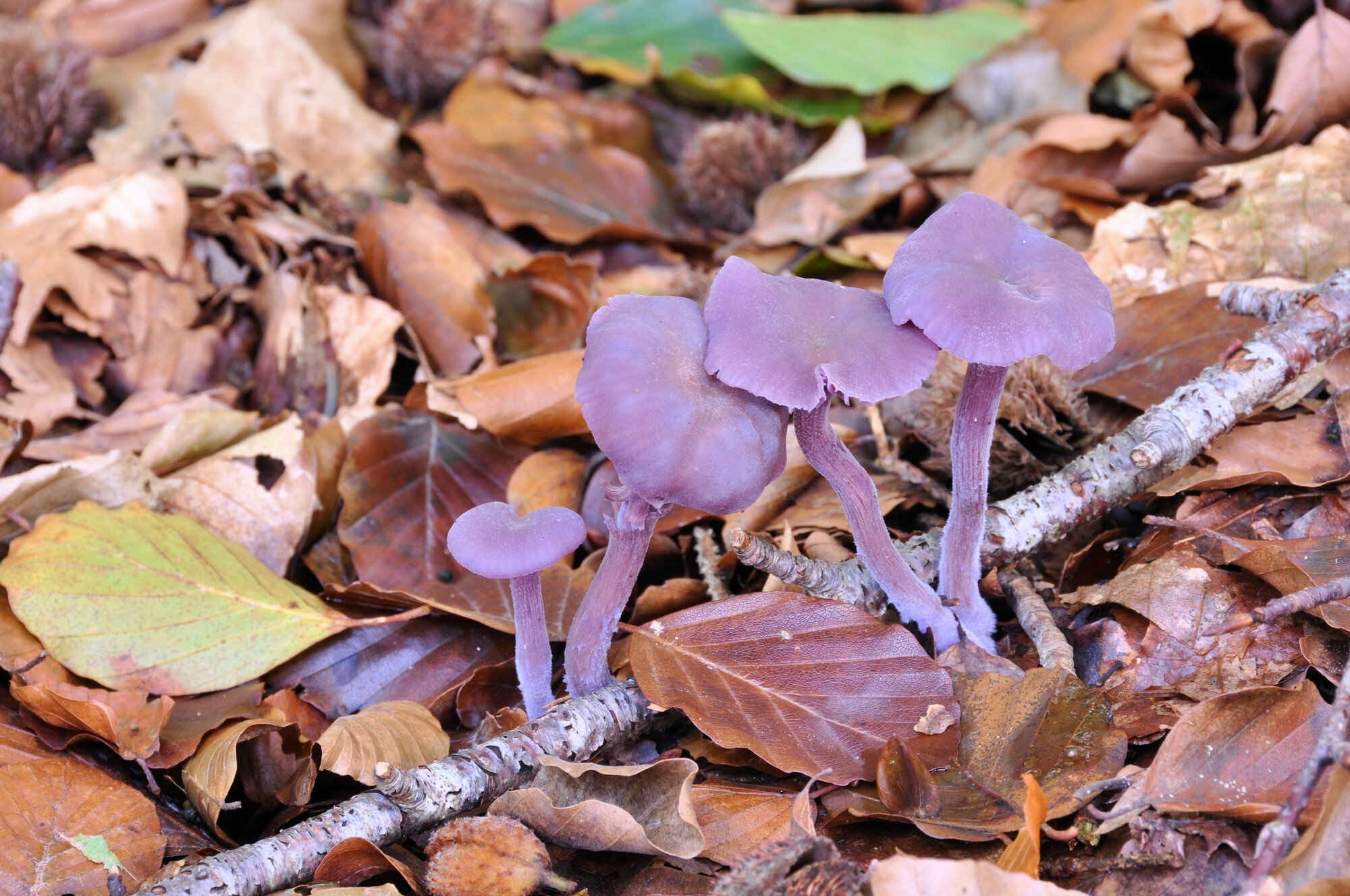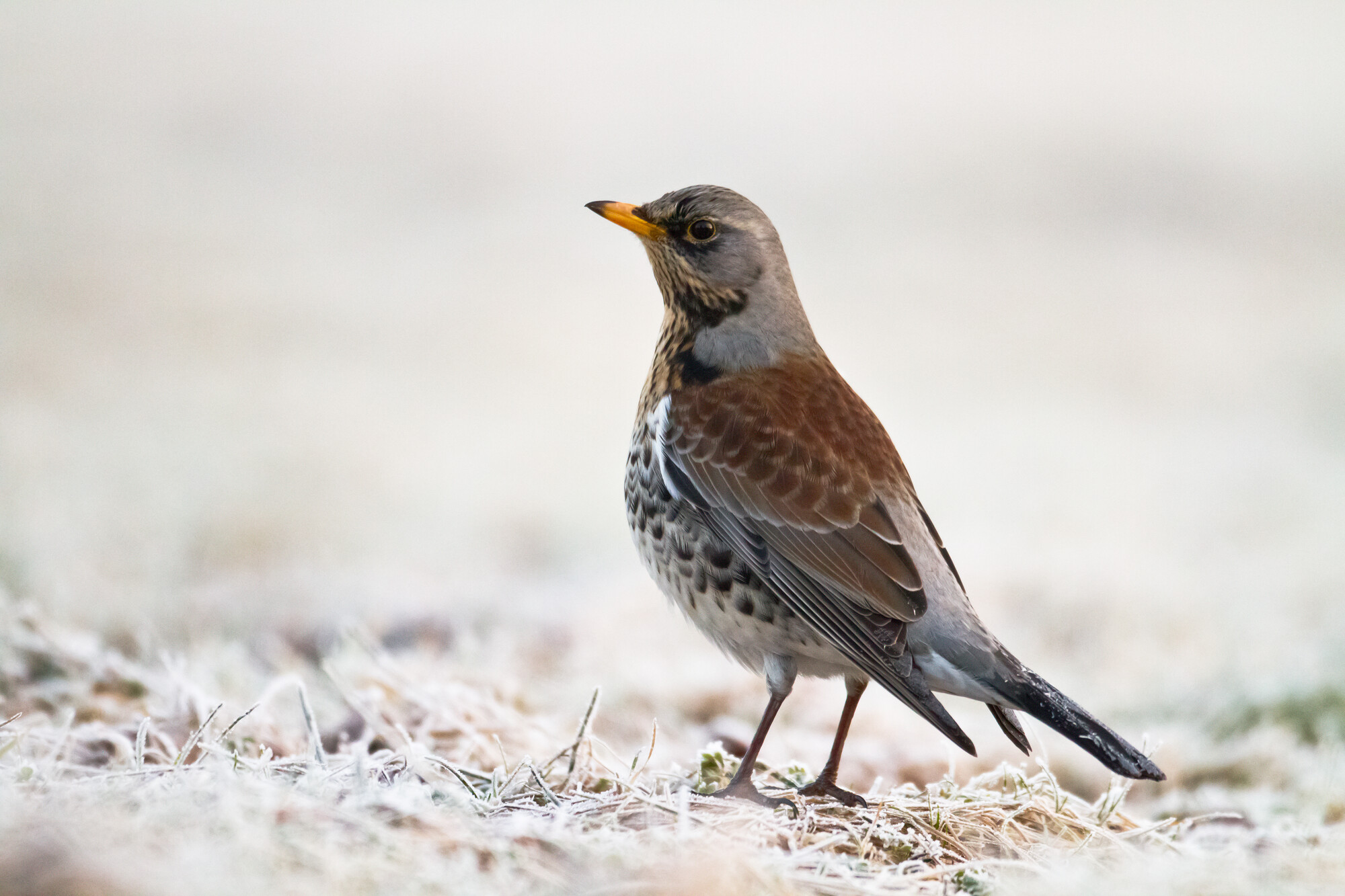
Winter wildlife in the Forest
As days remain short and fallen leaves litter the forest floor, it is easy to consider winter a lifeless season. Branches are bare, and apart from the frost-jewelled cobwebs on hedgerows it can be hard to spot any evidence of animal life. However, look closely and you will find that many forest plants and animals are well-equipped to endure the colder months.
The forest floor
Fungi and bacteria break down the decaying plant matter on the forest floor and the nutrients feed the earth ready for the spring plants and flowers.
Rotting leaf litter provides a warm home for millipedes, woodlice, spiders, and insect larvae. Ladybirds hibernate in winter and can often be found huddling in large numbers amongst leaves or in cracks in tree trunks. You may see blackbirds picking over dead leaves to find insects to eat. Even frogs and toads find shelter here. You can see them emerge as early as January and February to make their way to their breeding ponds.

Plants and berries
The bright red berries of hawthorn and holly are a welcome pop of colour in the absence of summer flowers and golden autumn leaves. Mistletoe is an evergreen plant that grows on the branches of other trees. The absence of leaves on its hosts in winter make it easy to spot its balls of bright green leaves and white berries.

Birds from near and far
Robins, of course, can be spotted throughout winter. On the coldest days, you might see them standing on one leg as they perch on branches, with the other leg tucked up amongst their warm feathers. They will swap legs frequently to ensure neither leg gets too cold.
Winter is also the time to spot redwings and fieldfares. These distinctively-coloured thrushes travel from Russia and Scandinavia to enjoy our relatively mild winter. Here, they enjoy the holly and hawthorn berries, which provide an important food source for birds when insects are scarce. Redwings and fieldfares are officially in decline and the hedgerows in the Heart of England Forest provide vital food and shelter for them.
Bewick swans from Siberia and the larger whooper swans from Iceland visit the UK in the winter. They can be spotted alongside our resident mute swans, ducks, and geese along the River Avon.
One of the most fascinating sights in winter is a starling murmuration. In winter, many more starlings visit the UK from the continent to enjoy our mild climate. At dusk, they gather to roost. Flocks arrive and group together in a murmuration, swooping and swirling in a huge balletic mass. As the sky darkens, they descend and roost for the night.

Listen out
The leafless trees in winter make it easier for sound to travel, so listen out for woodpeckers as they drum on tree trunks to mark their territory. Tawny owls, too, are more vocal in the winter as they establish and defend their home range. If you are out at dusk, you may hear their familiar ‘twit twoo’ calling.
Tracks and calls
Many animals are harder to spot simply because they tend to move around at night. However, mud, frost and snowfall can make it easier to notice their giveaway tracks. Use this handy guide from the Woodland Trust to help you identify any tracks you find.
Deer, badgers, rabbits, and foxes are all still active in the winter and may travel further in search of food. Foxes have their mating season over the winter, ready to give birth in the spring. Their haunting mating cries can be heard at dusk and at night.
Signs of spring
It may still seem dark and cold in January and February, but, as the days lengthen, you will notice sure signs of the approaching spring. Snowdrops are one of the first signs in the Forest. They push their delicate heads through the frozen ground in January and continue to flower until March. Look out for them in Dorothy’s Wood.
Groups of grey herons start to prepare their nests high in the still-bare branches of trees, usually laying their eggs in February. From February, you will also begin to see frogspawn and toad spawn in ponds and puddles. Queen bees emerge from their underground winter homes and start searching for a nest.

Supporting wildlife in winter
The Forest continues to be a vital life force in the winter. Look and listen closely and you will see evidence of the plant and animal life that continues to survive, and even thrive, through these colder months.
You can support our conservation work by becoming a Friend of the Forest, donating or dedicating a tree.



